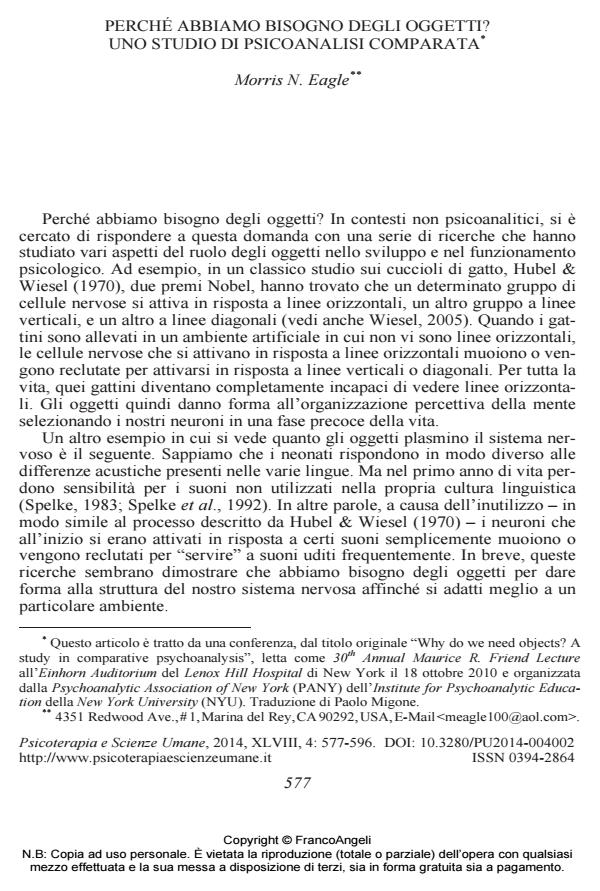Perché abbiamo bisogno degli oggetti? Uno studio di psicoanalisi comparata
Titolo Rivista PSICOTERAPIA E SCIENZE UMANE
Autori/Curatori Morris N. Eagle
Anno di pubblicazione 2014 Fascicolo 2014/4
Lingua Italiano Numero pagine 20 P. 577-596 Dimensione file 82 KB
DOI 10.3280/PU2014-004002
Il DOI è il codice a barre della proprietà intellettuale: per saperne di più
clicca qui
Qui sotto puoi vedere in anteprima la prima pagina di questo articolo.
Se questo articolo ti interessa, lo puoi acquistare (e scaricare in formato pdf) seguendo le facili indicazioni per acquistare il download credit. Acquista Download Credits per scaricare questo Articolo in formato PDF

FrancoAngeli è membro della Publishers International Linking Association, Inc (PILA)associazione indipendente e non profit per facilitare (attraverso i servizi tecnologici implementati da CrossRef.org) l’accesso degli studiosi ai contenuti digitali nelle pubblicazioni professionali e scientifiche
Si cerca di comprendere il motivo per cui gli esseri umani hanno bisogno degli oggetti, cioè delle relazioni interpersonali, e vengono paragonate e discusse le risposte date da diverse teorie psicoanalitiche. In questo studio di psicoanalisi comparata compiuto attraverso la lente della domanda "Perché abbiamo bisogno degli oggetti?", emergono risposte interessanti e anche sorprendenti: le teorie freudiana e kleiniana, più di altre teorie psicoanalitiche, identificano esplicitamente l’amore oggettuale come un imperativo dello sviluppo e come un criterio primario di salute mentale. Vengono discusse soprattutto le funzioni di regolazione che gli oggetti e le relazioni oggettuali hanno per il soggetto, e si cerca di comprendere il ruolo dell’amore oggettuale per il funzionamento psichico. Nelle conclusioni, vengono discusse le implicazioni cliniche delle diverse risposte alla domanda sul perché abbiamo bisogno degli oggetti.
Parole chiave:Teoria psicoanalitica, oggetti, relazioni oggettuali, amore oggettuale, funzioni di regolazione da parte degli oggetti
Morris N. Eagle, Perché abbiamo bisogno degli oggetti? Uno studio di psicoanalisi comparata in "PSICOTERAPIA E SCIENZE UMANE" 4/2014, pp 577-596, DOI: 10.3280/PU2014-004002